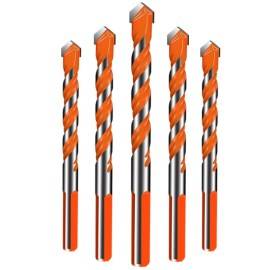- Industrial zone, South of Anping Town, Hengshui, Hebei, China.
- sales@hfpetromesh.com
- +86-18931809706
bar grating
Understanding Bar Grating A Comprehensive Overview
Bar grating, a pivotal component across various industries, serves both functional and aesthetic purposes. From architectural applications to industrial flooring solutions, bar grating offers strength, durability, and versatility, making it an essential material in modern construction and design.
What is Bar Grating?
Bar grating is a type of load-bearing grid structure fabricated from metal, plastic, or other materials. Its design comprises parallel bars spaced at consistent intervals, creating a series of openings. This configuration allows for the passage of light, airflow, and even water while providing a robust surface capable of supporting heavy loads. The simplicity of its structure belies the engineering precision that goes into its production, ensuring it meets the specifications required for various applications.
Types of Bar Grating
There are several types of bar grating, each tailored for specific uses
1. Metal Bar Grating Typically made from steel or aluminum, metal bar grating is known for its strength and durability. It can withstand heavy loads, making it ideal for industrial settings such as factories, power plants, and transportation facilities. Metal grating can be further classified into welded, locked, or swaged grating, depending on the assembly method.
2. Fiberglass Reinforced Plastic (FRP) Grating This type of grating is made from a composite of fiberglass and resin, making it resistant to corrosion, chemicals, and environmental stress. FRP grating is often used in marine applications, wastewater treatment plants, and areas where harsh chemicals are present. Its lightweight nature makes it easy to handle and install.
3. Safety Grating Safety is a critical consideration in many applications. Safety grating features a non-slip surface, often enhanced with additional textures or coatings, which significantly reduces the risk of slipping. This type of grating is commonly found in walkways, stairs, and mezzanines, ensuring the safety of personnel and equipment.
Applications of Bar Grating
Bar grating is utilized across several sectors due to its diverse capabilities
- Industrial Flooring One of the most common applications, bar grating provides a strong and stable surface for load-bearing areas in factories, warehouses, and distribution centers. Its open design allows for the easy passage of debris, making cleaning and maintenance straightforward.
bar grating

- Walkways and Platforms Bar grating is often used to construct walkways, platforms, and stairs. Its open design promotes drainage, reducing the risk of water accumulation and thereby enhancing safety.
- Architectural Features In contemporary architecture, bar grating is increasingly incorporated into designs as a decorative element. It can be used in façades, balustrades, and canopies, providing both an aesthetic appeal and functionality.
- Environmental Applications In wastewater treatment, bar grating is employed as platforms above settling tanks or filtration systems, allowing workers to access these areas safely while ensuring contaminants remain contained.
Advantages of Bar Grating
The benefits of bar grating extend beyond mere strength and functionality. Some key advantages include
- Lightweight Despite its robust nature, many types of bar grating, especially FRP, are lightweight, making transport and installation easier.
- Corrosion Resistance Materials like stainless steel and fiberglass offer high resistance to corrosion, making them suitable for various environments, including coastal and chemically challenging areas.
- Cost-effective Bar grating often proves to be a cost-effective solution when considering both initial costs and long-term maintenance savings.
- Customizability Bar grating is available in various types, sizes, and materials, allowing for tailored solutions that meet specific project requirements.
Conclusion
Bar grating is a multifaceted material that continues to play a significant role in various fields. Its strength, adaptability, and aesthetic potential position it as a vital component in modern infrastructure. As industries evolve, the demand for innovative solutions such as bar grating will undoubtedly grow, paving the way for further advancements in design and applications. Understanding its benefits and applications can help in making informed choices for construction and design projects, ensuring safety, efficiency, and visual appeal.
-
The Power of Pyramid Shaker Screen - A 3-Dimensional SolutionNewsOct.24,2024
-
Exploring the Versatility and Durability of Steel GratingNewsOct.24,2024
-
Revolutionizing Drilling Efficiency with Steel Frame Shaker Screens for Mud Shale ShakersNewsOct.24,2024
-
Potential of Shale Shaker ScreensNewsOct.24,2024
-
Offshore Pipeline Counterweight Welded Mesh - Reinforced Mesh in Marine EngineeringNewsOct.24,2024
-
Revolutionizing Offshore Pipeline Stability with Concrete Weight Coating MeshNewsOct.24,2024
